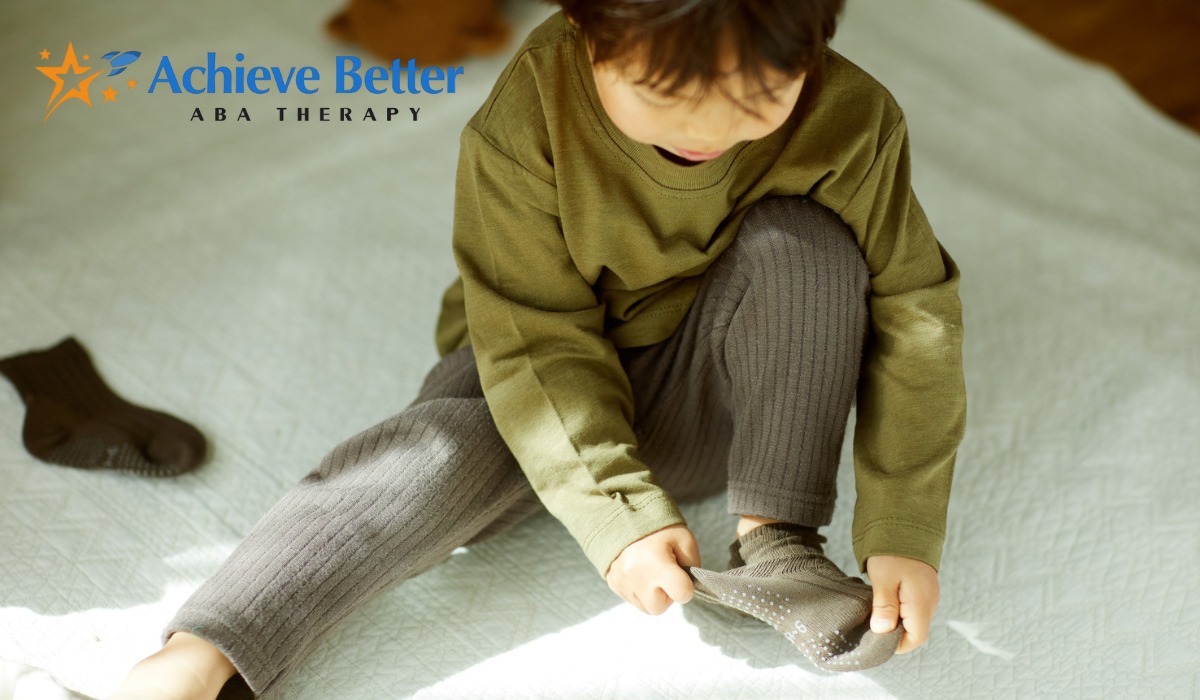Sensory Sock Uses and Perks for Kids With SPD or Autism

Key Points:
- Sensory socks provide deep pressure input that helps with body awareness, emotional regulation, and sensory integration.
- They are especially helpful for children with sensory processing challenges, including autism and ADHD.
- Using sensory socks can improve focus, coordination, and overall sense of calm, making them useful both at home and in therapeutic settings.
There’s a quiet kind of magic in discovering something that simply works. For many parents, that moment arrives when they see their child calmer, more focused, or simply more comfortable in their own skin, all thanks to something as unassuming as a sensory sock. Often overlooked, these stretchy, cocoon-like garments can be a gentle game-changer in a world that’s constantly too loud, too bright, or just too much.
Sensory sock benefits have come to light for children who process the world a little differently. Whether it’s due to sensory processing disorder (SPD), autism spectrum disorder (ASD), ADHD, or general sensory sensitivities, sensory socks offer a calming, organizing effect. Understanding how and why these tools work can guide families in creating supportive, nurturing environments that meet their child’s unique needs.
What is A Sensory Sock And Is It Really Effective?
Yes, sensory socks can be highly effective in supporting children with sensory challenges by offering proprioceptive input and a sense of calm and security. They’re not magic, but they come remarkably close for many families.
A sensory sock is a stretchable, body-hugging garment made from soft, resistant fabric. It wraps around the body, providing deep pressure stimulation while still allowing movement. This combination of resistance and compression gives the wearer a sense of boundaries, which helps with body awareness (also known as proprioception), emotional regulation, and focus.
The benefits of sensory socks are both physical and emotional. They help kids feel grounded—like receiving a full-body hug. And in a world that can feel unpredictable or overstimulating, that sensation is both comforting and regulating.
Who Can Benefit From Sensory Socks?
While sensory socks are popular among occupational therapists and families of children with autism or sensory processing difficulties, their uses extend far beyond that scope.
Common beneficiaries include:
- Children with Autism Spectrum Disorder (ASD): Sensory socks help them feel more secure, especially when they’re overwhelmed by environmental input.
- Children with Sensory Processing Disorder (SPD): These children often seek or avoid sensory input. The consistent, soothing pressure of a sensory sock can meet their sensory needs without chaos.
- Children with ADHD: Many kids with attention challenges benefit from the increased body awareness and reduced anxiety sensory socks provide.
- Highly Sensitive Children: Even without a diagnosis, some kids are simply more affected by sensory input, and these socks can help them find calm in overstimulating situations.
In addition, sensory socks aren’t limited to children. Teens and even adults who experience sensory overload or need self-regulation tools can benefit as well.

Top 5 Sensory Sock Benefits
Sensory socks are much more than a trend—they’re backed by therapeutic strategies and sensory integration principles.
Here are the most recognized sensory sock benefits:
1. Deep Pressure Input
One of the primary advantages is the deep pressure stimulation they offer. This input calms the nervous system and can help reduce anxiety, similar to the way a weighted blanket works. The gentle compression can make children feel secure and less reactive to environmental stimuli.
2. Improved Body Awareness
Children who struggle with spatial orientation or bump into things often may lack proprioception. The resistance provided by a sensory sock helps the brain recognize where the body is in space, improving balance, coordination, and motor planning.
3. Emotional Regulation
Sensory socks can serve as a calming tool when emotions run high. By providing a consistent form of feedback, they can reduce tantrums, meltdowns, or shutdowns, particularly in children who are prone to sensory overload.
4. Enhanced Focus and Attention
Once the body feels regulated, the brain is free to engage more effectively. Many children are better able to sit through homework, listen to instructions, or engage in play after time spent in a sensory sock.
5. Encouragement of Creative Play
The enclosed environment of a sensory sock encourages imaginative movement. Children often use them in play to crawl, stretch, or mimic animal movements. This builds motor skills and creative expression at the same time.
How To Use Sensory Socks Effectively
Sensory socks can be integrated into daily routines in a variety of helpful ways. There’s no “one-size-fits-all” approach, but there are best practices to keep in mind:
- Morning routines: Starting the day in a sensory sock can help regulate energy and prepare a child for school or structured activities.
- Transition times: Moving between activities can be hard for some kids. Using a sensory sock during these moments helps make transitions smoother.
- Therapeutic sessions: Occupational therapists often use sensory socks in sensory integration therapy to support motor and sensory development.
- Bedtime wind-down: Some children find that brief use of a sensory sock before bed helps them relax and fall asleep more easily.
Always supervise young children while they’re using a sensory sock and follow the product guidelines for age and safety.
Choosing The Right Sensory Sock
Not all sensory socks are created equal. The right fit, fabric, and resistance level can make a significant difference in comfort and effectiveness.
Key features to look for:
- Size and Fit: A snug—but not restrictive—fit is essential. Too loose, and it won’t offer the desired compression; too tight, and it can be uncomfortable.
- Breathable Fabric: Soft, stretchy, and breathable materials like spandex blends ensure comfort during use.
- Durability: Frequent use means durability matters. Look for reinforced stitching and high-quality materials.
Parents should also consider their child’s sensory preferences. Some children may prefer more resistance, while others respond better to lighter compression. Trial and observation are often necessary.
Understanding Sensory Needs Holistically
Sensory socks are one valuable tool in a larger toolbox for supporting children with sensory challenges. They work best when part of a thoughtful sensory diet—an individualized plan that includes various sensory activities tailored to a child’s needs.
It’s helpful for parents to work with professionals, such as occupational therapists or behavior analysts, who can guide the integration of sensory tools like socks into a structured plan. Every child is different, and finding the right combination of supports can make all the difference.
Support For Sensory Processing And Beyond: ABA Therapy In North Carolina
When sensory challenges affect daily functioning, families may need more than tools—they need guidance, expertise, and personalized support. That’s where Achieve Better comes in.
Achieve Better offers ABA therapy in North Carolina, specializing in evidence-based approaches to help children with autism and other developmental differences thrive. While sensory socks can support emotional regulation and self-awareness, ABA therapy goes further—teaching skills, reducing behaviors that interfere with learning, and fostering independence.
Whether your child struggles with transitions, attention, or navigating social situations, ABA therapy provides structured, meaningful interventions. For families exploring sensory tools like socks, ABA professionals can help assess how these supports fit into a bigger picture of growth and success.
If you're in North Carolina and seeking compassionate, expert ABA therapy for your child, reach out to us today. Let’s build better outcomes—together.
Similar articles
Contact us today to learn more.





.jpg)






